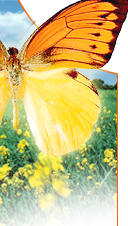 |
 |
EARTH ETHICS 1997 Fall/Winter Spirituality: Key to a Humane Society, by Donald W. Cashen. Touching the deep spirituality of noted writers from the English Romance period and philosophers who followed them, Cashen weaves a biblical, literary, and deeply spiritual journey. He protests that spirituality is not a commodity that can be brokered and calls us to recall the first biblical "symbolic expression of sustainability and spirituality and be fascinated once more by the sight of a burning bush that does not consume itself." Secular Spirituality, by John A. Hoyt. A challenge to open minds and spirits "as we explore the link between spirituality and sustainability." Hoyt calls us be sure that our visions and analyses "make room for a spirituality, both old and new, not grounded in formal religious traditions." The Fulfillment of Life, by Charles G. Spencer. " If we were to believe as Saint Francis believed," says Spencer, humankind would not be at odds with creation. The article goes on to say that acknowledging the integrity of creation requires that we acknowledge our own limitations, calling us to return to experience our connections with the earth and re-establish our connections with the Creator. Beyond the Bird Baths, by Peter Damien Massengill. St. Clare and St. Francis brought many new innovations into religious expression in the 1200 C.E. period. Massengill calls the draft Earth Charter one of the canticles of our age, "bringing into harmony our own intimate relationship to the whole universe." Creating and Maintaining Sustainable Communities: Realities and Challenges, by Cristina M. Liamzon. For communities and societies to achieve self-reliance and sustainability important changes need to occur. We will need a new economics as well as a "balanced and harmonious relationship between human communities and their natural environment." The Global Eco-Village Strategy, by J.T. Ross Jackson and Hildur Jackson. The Global Eco-Village Strategy has origins dating back to 1990. This article follows its development, describes current projects and offers a strategy for the future. POETRY: The Crane and Summer Solstice, by Amy Freeman Lee. The Educator of the Twenty-first Century, by Elizabeth M. Ferrero. After many years of listening to her students needs in the classroom, the author offers her observations and prescriptions for our institutions of learning. Of primary concern is the body\soul disconnection arising from the artificial separation of human from natural worlds. Man-Made Chemicals and the Health of the Unborn, by Frederick S. vom Saal. Starting from the dramatic decline of live young in bird nests between 1980 and1983, the author reviews the impacts of potential endocrine disrupters from persisten organic pesticides and other sources on human and other life on our earth. The Challenge of Our Times, by Thomas Berry. This article reviews the split that has occurred in the secular and spiritual worlds in the past century. It also calls us to foster a new sense of communities in bioregional contexts, while restoring the "organic economy" and to give primacy to a vision of literacy that moves human words from the center and focuses on reading "the Great Book of the Universe." Knowledge of Place as Part of a Curriculum for Ecological Studies, by Gary N. McCloskey. This is the story of St. Thomas University's vision of creating a curriculum based not only on "the ecology of the world, but most especially [on] the concrete reality of the people of the bioregion." Their efforts are designed to reconnect people "to the very ground out of which we grow." |